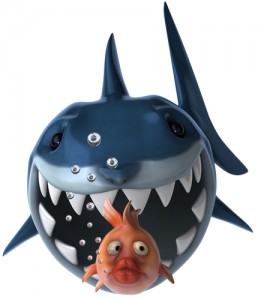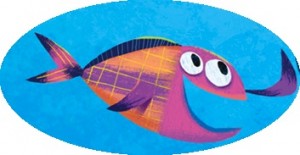This blog breaks down and analyzes one amazing picture book every month. It’s one thing to read about the techniques that make a great children’s story, but in order to really master those techniques– it’s best to see them in action. If you want to be notified when a new blog comes out, make sure to subscribe to this feature on the right.
Most of the picture books analyzed on this blog will be rhyming picture books because, well, the site is called RhymeWeaver. Its main focus is um, you know, rhyme. But it’s important to remember that, even when writing in rhyme, the story comes first. Always! Before you perfect your rhyme, you must have a flawless story. It’s also important to remember that you do not NEED to tell your story in rhyme. And a really good author like Tami Sauer can tell a story in a way that sounds just as clever and fun as a rhymed story.
STORY/PLOT: Nugget & Fant is a traditional story so it’s easy to track the plot. If you’re not familiar with the Traditional Plot, see 303 Traditional Plot
CHARACTER(s): Nugget and Fang has two main characters which are easily identifiable because they are in the title. This is obviously the easy part. No extra points if you got that.
SETTING: The setting is worked out in the first paragraph. As a matter of fact, the whole set up, which includes the characters, setting, and important relationships is handed to you on the first page. This is ideal for picture books because kids like their action right up front. They get bored if things don’t get moving, so a tight, efficient set up is good children’s writing.
 CONFLICT: The external conflict comes gradually. As readers, we are introduced to the food chain. Sharks eat minnows. Nugget is a minnow and Fang is a shark. Not good. We are reminded repeatedly by the very institution that ensures sound education (school) that minnows are not suited to friendship with sharks. This sounds like good advice. Nugget takes it. But the shark is desperate to have his friend back. The previously “almost perfect” state of things is uprooted.
CONFLICT: The external conflict comes gradually. As readers, we are introduced to the food chain. Sharks eat minnows. Nugget is a minnow and Fang is a shark. Not good. We are reminded repeatedly by the very institution that ensures sound education (school) that minnows are not suited to friendship with sharks. This sounds like good advice. Nugget takes it. But the shark is desperate to have his friend back. The previously “almost perfect” state of things is uprooted.
RISING ACTION: When you read about the “rule of threes,” this is where you find it. You many find it other places also, but always here. The main character generally makes three attempts to confront the problem. Notice that Fang makes four attempts at re-establishing his friendship with Nugget. The “rule of threes,” it seems, can be broken. Make a note of that, but make sure you understand the basis behind the rule and that is that readers want to see the hero struggle. The term “rising action” means that the action must cause a raising of tension and that comes from desperation, from failure. Fang fails, four times. Sauer is a talented and prolific writer; she knows the “rule of threes,” but in this case, a fourth movement works. Sometimes a fifth will work. The point is that the reader needs to see the hero struggle to gain what he wants. Readers need to identify with the hero’s desire to obtain his goal. But temper this by remembering that you also don’t want the reader to get bored with the accounting of attempts. Balance is key, and Sauer is certifiably masterful at balance.
 Before looking at the other elements of story, it is important to take a detour regarding the “rule of threes.” Notice that in this story, I have said that the external problem comes gradually? In this case, the rule of threes can be seen again. Nugget goes to three classes where he learns in different formats why sharks are dangerous to minnows. The rule of threes here functions to reverse a given. What I mean by that is that we are given the detail that a shark and a minnow are best friends. We take this as part of the foundation of the story. So, if Sauer were to simply change that fact in one fell swoop, we would find it difficult to trust her as an author. Why set up a foundational tenet and then destroy it? The reason is clear when you look at theme, but for the course of the story, this is something that must be done delicately. This is why Sauer uses the rule of three. Nugget is introduced to evidence that sharks are dangerous three different times. Each time, he resists. But finally, he capitulates. This is the development of the internal conflict. If Nugget just reversed his opinion the
Before looking at the other elements of story, it is important to take a detour regarding the “rule of threes.” Notice that in this story, I have said that the external problem comes gradually? In this case, the rule of threes can be seen again. Nugget goes to three classes where he learns in different formats why sharks are dangerous to minnows. The rule of threes here functions to reverse a given. What I mean by that is that we are given the detail that a shark and a minnow are best friends. We take this as part of the foundation of the story. So, if Sauer were to simply change that fact in one fell swoop, we would find it difficult to trust her as an author. Why set up a foundational tenet and then destroy it? The reason is clear when you look at theme, but for the course of the story, this is something that must be done delicately. This is why Sauer uses the rule of three. Nugget is introduced to evidence that sharks are dangerous three different times. Each time, he resists. But finally, he capitulates. This is the development of the internal conflict. If Nugget just reversed his opinion the  first time the danger of sharks was introduced, there would be no tension, no conflict. In this struggle, we see Nugget resisting, we see him pulled in two directions. In this story, the internal conflict is Nugget’s and the external conflict is Fang’s. By dividing the external conflict from the internal conflict, Sauer allows the reader to identify with both characters. The reader gets to be on both sides of the situation, thereby creating a more empathetic child. Brilliant move, right?
first time the danger of sharks was introduced, there would be no tension, no conflict. In this struggle, we see Nugget resisting, we see him pulled in two directions. In this story, the internal conflict is Nugget’s and the external conflict is Fang’s. By dividing the external conflict from the internal conflict, Sauer allows the reader to identify with both characters. The reader gets to be on both sides of the situation, thereby creating a more empathetic child. Brilliant move, right?
CLIMAX: The climax is the point at which the hero must either finally persevere or lose everything. Sauer does a great job of raising the stakes here. The minnows get caught in a fisherman’s net. They’re doomed, soon to be displayed at a seafood counter near you. It’s the end. Fang must either rescue Nugget or lose him forever, forced to endure eternal loneliness. Fortunately those, um, fangs, come in handy. Fang chews the net and saves not just Nugget, but all the minnows.
RESOLUTION: Nugget and Fang resume their previously blissful friendship joined by Nugget’s fellow school mates. Now the enlightened minnows cavort with a shark in what would have been scandalous a day earlier. All is well, and “perfect” renews its status as the favored descriptive adjective of Nugget and Fang’s life.
THEME: The most important aspect of this book is it’s theme: the innate separateness of certain groups. The deeper version of this theme looks at our societal customs and ideas about cultural and social groups and their compatibility. In Nugget and Fang, those groups are sharks and minnows, which biologically speaking, ARE unsuited to friendship. Even kids know that  minnows and sharks aren’t friends. But Nugget and Fang, like all animal characters in children’s stories, are stand-ins, they represent children. The beauty of Nugget and Fang is that Sauer has created two completely diverse characters that, for all intents and purposes, should NOT be friends. By creating characters that have no logical basis for friendship, Sauer encapsulates every possible bigotry and stereotype imaginable. She’s giving you the extremes, the very most impossible circumstances for mutual friendship. And then she has negated it all by making them best friends. And this is basis the for the conflict of the piece. Never underestimate the value of powerful conflict. A strong conflict is at the heart of every culturally valuable story.
minnows and sharks aren’t friends. But Nugget and Fang, like all animal characters in children’s stories, are stand-ins, they represent children. The beauty of Nugget and Fang is that Sauer has created two completely diverse characters that, for all intents and purposes, should NOT be friends. By creating characters that have no logical basis for friendship, Sauer encapsulates every possible bigotry and stereotype imaginable. She’s giving you the extremes, the very most impossible circumstances for mutual friendship. And then she has negated it all by making them best friends. And this is basis the for the conflict of the piece. Never underestimate the value of powerful conflict. A strong conflict is at the heart of every culturally valuable story.
 LITERARY ALLUSION: But look a little deeper at the story. Think about the words: sharks and minnows. Sharks and Minnows is a game played in swimming pools. Perhaps Sauer chose her animal prototypes based on this game, but I don’t think she did. I think it’s something more significant. One of the single most famous stories of our time, West Side Story, has this very theme at its heart. And the one thing everybody knows about West Side Story is that the two opposing gangs were called the Sharks and the Jets. The conflict between the Sharks and the Jets was more cultural than biological, but the main characters, like Nugget and Fang, were completely immune to it. It was the people around them who insisted that the groups could not mix. And if you’re still not impressed with Sauer’s level of classic literary allusion, let me point out that West Side Story is a modern remake of Romeo and Juliet. Shakespeare’s Montagues and Capulets were the first Jets and Sharks, (or Sharks and Minnows, if you will). So this theme is as old as the English literary renaissance. The conflict is exactly the same in all three stories: some groups of people cannot mix. But if we start teaching children to look past convention, to question the innate separateness of certain groups, we are teaching them to be open minded and maybe, hopefully, better people than the Montague’s and the Capulets, or the Jets and the Sharks.
LITERARY ALLUSION: But look a little deeper at the story. Think about the words: sharks and minnows. Sharks and Minnows is a game played in swimming pools. Perhaps Sauer chose her animal prototypes based on this game, but I don’t think she did. I think it’s something more significant. One of the single most famous stories of our time, West Side Story, has this very theme at its heart. And the one thing everybody knows about West Side Story is that the two opposing gangs were called the Sharks and the Jets. The conflict between the Sharks and the Jets was more cultural than biological, but the main characters, like Nugget and Fang, were completely immune to it. It was the people around them who insisted that the groups could not mix. And if you’re still not impressed with Sauer’s level of classic literary allusion, let me point out that West Side Story is a modern remake of Romeo and Juliet. Shakespeare’s Montagues and Capulets were the first Jets and Sharks, (or Sharks and Minnows, if you will). So this theme is as old as the English literary renaissance. The conflict is exactly the same in all three stories: some groups of people cannot mix. But if we start teaching children to look past convention, to question the innate separateness of certain groups, we are teaching them to be open minded and maybe, hopefully, better people than the Montague’s and the Capulets, or the Jets and the Sharks.
